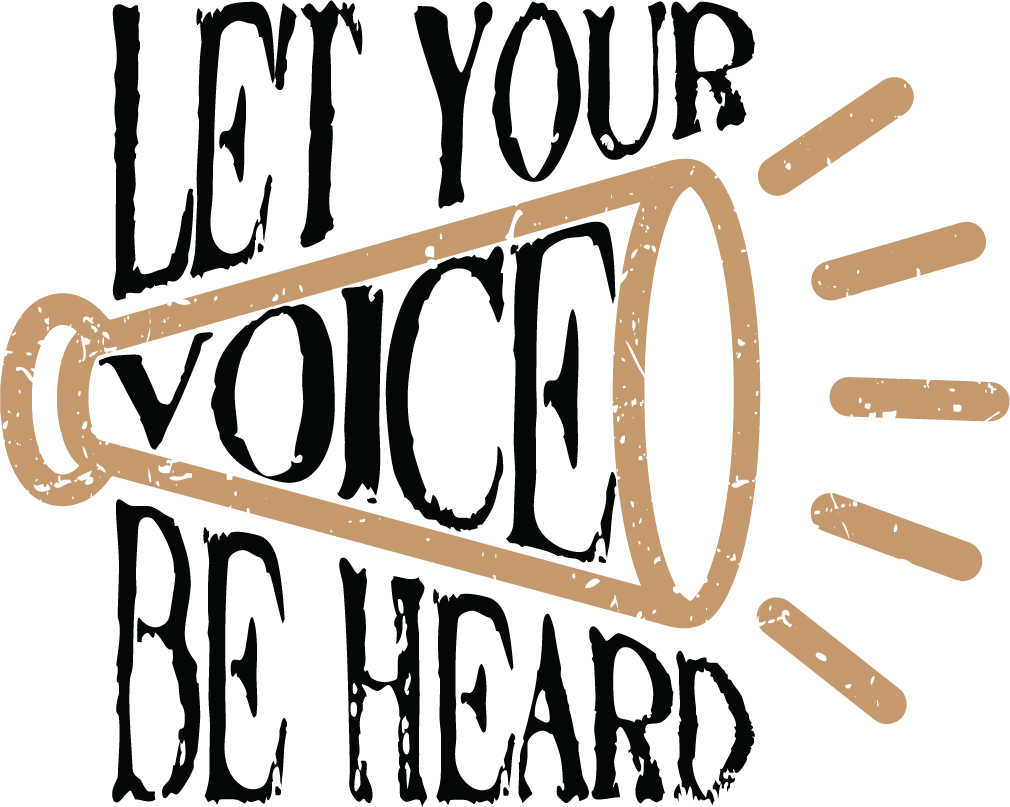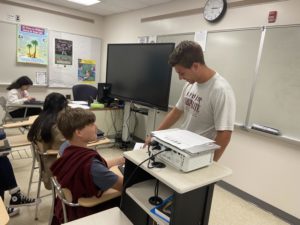The resistance is just getting started
February 28, 2017
Exactly one day after the paltry showing at Donald Trump’s inauguration, over 500,000 demonstrators descended on Washington D.C. for the Women’s March on Washington. A number of Hereford students and residents made the D.C. trip, which packed highways and swamped public transit by exceeding all expectations for attendance.
“Some people are choosing to be complacent and acting like they don’t care, but people are definitely more involved now,” said Lindsey Bull (’17), who says that since the last election she’s been involved in antifascist and women’s rights activities.
Across the US another 4 million came together for local marches, and nearly 700 other Women’s March events took place worldwide, on all seven continents, including Antarctica.
But, as organizers and participants were quick to point out, that was only the beginning. One week later, thousands gathered at airports around the nation to protest Trump’s travel ban barring entry from seven Muslim nations, a move that affected routine travelers as well as refugees, Green Card holders and legal US citizens. In Europe, which has borne the brunt of the refugee crisis which peaked in 2015, protesters gathered outside US embassies to oppose the policy.
Rights groups like the American Civil Liberties Union (ACLU), Human Rights Watch (HRW) and Amnesty International quickly mounted legal challenges, as did the States of Washington and Minnesota. On Feb. 3 a Federal District Court in Washington issued a ruling in The State of Washington v. Donald J. Trump halting the enforcement of the order, arguing that it amounted to an unconstitutional religious test and that it offered no clear security benefit to the United States. The US Ninth Circuit Court upheld the ruling when challenged by the Trump administration. Trump and his inner circle lashed out at the judiciary, attacking specifically the “so-called” judges involved (an even mix of Democrats and Republicans by the way) and more generally the Constitutional system of checks and balances itself.
Frustrated citizens have donated generously to organizations opposing Trump. After the November election the ACLU broke all its fundraising records and saw its membership more than double, to over one million Americans. In the weekend following Trump’s executive order it would break its own records again, raising $24 million from hundreds of thousands of online donations, and picked up more than 150,000 members. The ACLU reports that it typically raises $4 million in a year.
Similarly, Planned Parenthood received more than 300,000 donations in the first month after Trump’s election, forty times the normal rate. Over 20,000 donations were made in the name of Vice President Mike Pence, a religious right-winger with a history of opposing abortion and trying to electrocute gay people.
There’s also been a surge in donations and aid to the protest encampments at the Standing Rock Sioux Reservation, where activists are fighting to halt the construction of the Dakota Access Pipeline. Over $1 million was donated to the group Veterans Stand, an organization of US military veterans which “deployed” to Standing Rock to form a human wall against the pipeline.
And of course anyone who works in the vicinity of Pennsylvania Avenue can expect heavy traffic in the weeks (and possibly months and years) to come; on April 15 demonstrators will take to the streets to demand the disclosure of Donald Trump’s tax returns (bet you almost forgot about that, didn’t you?), on April 22 the Scientists’ March on Washington will protest the gagging of federal agencies under Trump and the administration’s anti-Science political positions, and then on April 29 the People’s Climate Movement hopes to exceed the scale of its 2014 march on the UN in New York, demanding responsible climate action from the government.
And we can surely count on Trump doing something else in the intervening time frame that will bring people into the streets again. On inauguration day polls showed Trump was the least popular incoming president in American history, with a 40% approval rating, as opposed to Obama’s 84% approval rating in 2009 and Bush’s 57% in 2001. Of course, Trump’s numbers have not improved since then and he can’t seem to stop complaining about it, dismissing all negative polls (that is: all polls) as “fake news.”
This is in line with Trump’s steadfast refusal to compromise on positions that are unpopular with the majority of voters, even those which are held in disdain by many conservatives. His presidency is already tainted with the illegitimacy of a popular vote defeat and the suggestion of foreign interference on his behalf, with the dark cloud of the Russia scandal spreading and enveloping more and more of the administration.
If there’s any upside to all of this, it’s expanding political consciousness. To put things simply, Trump is widely reviled by most Americans and depends on a fanatically loyal sliver of the populace for political support. The administration is acting against the will of the American people, and that has galvanized opposition on an unprecedented scale; one month into Trump’s presidency the opposition movement is only growing in size and momentum.
A number of left-leaning students have organized a Progressives Club on campus to coordinate political activities and charity efforts.
“I wanted to help make a Progressives Club not so much for the political opposition but more for helping the less fortunate and the disenfranchised,” said Matt Duquette (’18), who helped start the new political group which meets weekly in English Teacher Meg Hamilton’s room.
“It is important for everyone to have an outlet for their opinions, especially in Hereford,” said club member Andrew Ferguson (’18).
Others have expressed a commitment to further direct action, saying that they plan to attend the upcoming marches in Washington. Each found their own particular reason to oppose Trump.
“Where do I start?” said Bull. “Obviously women’s rights, with reproductive rights being assaulted.”
Hannah Ace (’17) is concerned about environmental issues, “specifically how he’s erasing all facts on climate change, and how we’re all going to die.”
“I just want to see things get better or at least try,” said Carter Hammersla (’18), “I’m sick of everything screwing over everyone whether you’re white, black, man, woman, whatever. It just pisses me off how often at least one person is thrown under the bus and I’d like to see that change.”
Demonstrations must, and will, continue. And if the government continues to act against the wishes and interests of the majority, as it is right now, then violence will inevitably follow. “Riot is the language of the unheard,” after all. The unprecedented incompetence and ideological vitriol of this administration has sparked an unprecedented mass movement against it. Trump and his cronies may have totally insulated themselves from reality at this point, but the rest of us should remember one of the basic lessons of history: ignore the majority for long enough and things get ugly.






